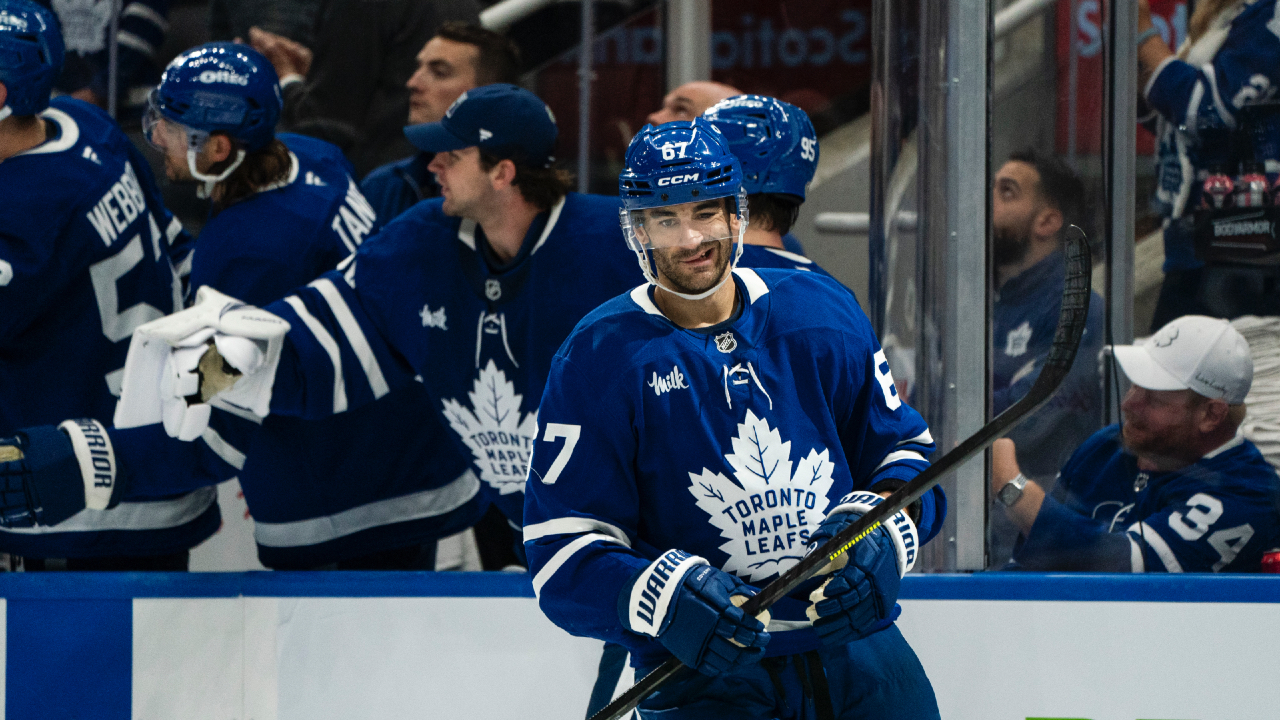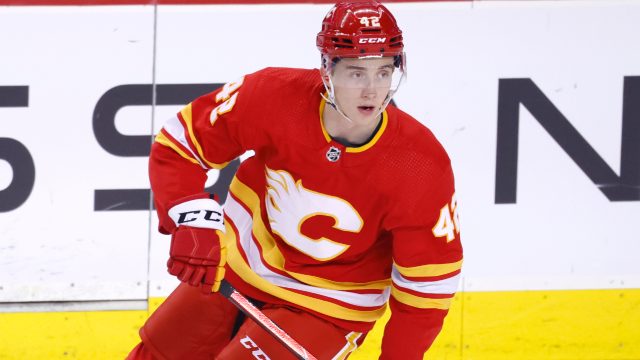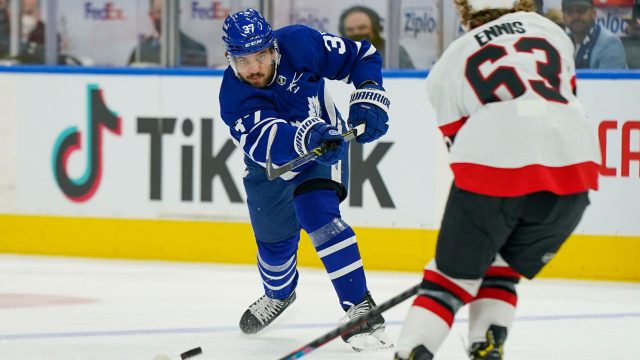
TORONTO — Craig Berube is a simple coach with simple explanations and simple expectations.
So, Coach, why was Max Pacioretty — a six-time 30-goal man — healthy-scratched Wednesday after consecutive Toronto Maple Leafs wins and three days between games to rest his 35-year-old muscles?
“That’s just a decision I made. That’s it,” Berube said.
OK. So, what message does the press box assignment send to the veteran?
“There’s no message,” Berube said.
“We have extra players, and not everybody can play every night. That’s the bottom line. He’s been fine when he’s played, but I gotta make decisions as a coach. And I’m going to make those decisions (based on) what I think is best for the team.”
Speak to those who have skated for Berube in past, many of whom ended up drinking champagne from the same trophy as him, and you won’t be surprised how the coach is handling these early player demotions in Toronto.
Berube doesn’t do public deep dives into his reasoning — mostly because his lineup decisions do simply boil down to winning the game in front of him — and he is loath to bury an athlete publicly.
That said, Berube is swiftly trying to establish a standard and style of play in his first month on the job.
And if that comes as a reality check to guys who are coming in high off new raises (Bobby McMann, Timothy Liljegren) or might hope to get by on long résumés (Pacioretty, Ryan Reaves), well, the new boss has been quick to establish a meritocracy.
To keep third-line defencemen and bottom-six wingers battling for their minutes and special-teams personnel fighting for their spot (see: Morgan Rielly’s bump to PP2).
In short, the coach sees what the fans see, what the players themselves see.
And in the case of Pacioretty, the inexpensive, offensively-minded left winger hasn’t played awful by any means. He has hardly made himself indispensable, either — as evidenced by Toronto’s 6-2 win over the Kings without him.
That’s a function of Pacioretty having “a lot to prove” as the oldest player on Toronto’s roster and coming off multiple Achilles injuries and of the Maple Leafs having more than a dozen NHL-level forwards at their disposal.
Hey, Pacioretty could have chosen an easier path to time on ice. (Fellow scoring left wing James van Riemsdyk landed in rebuilding Columbus, for example.) But he signed with a deep squad that is trying to contend for a Stanley Cup.
We’d argue that there is a message being sent to all Leafs on the fringes: “Fine,” as Berube puts it, no longer guarantees a regular shift in this town.
“You know, it’s been a lot. It’s never easy to change teams. And under these circumstances, even more so,” Pacioretty said, candidly, after pouring in a notable amount of extra work at Tuesday’s practice.
“I liked my first game. Second game was pretty good. Didn’t like my last game. So, I want to start trending in the right direction and try to build some games together. But at the same time, I’ve mentioned before that it’s going to be some different roles and different ways to try to help the team win. And I’m excited about doing that.”
Failing to register a shot and taking a penalty in Saturday’s home-opener win over Pittsburgh, Pacioretty saw his ice-time limited to under 11 minutes and his temporary PP1 promotion (in the absence of an ill John Tavares) snatched by young Matthew Knies mid-game.
The improving Knies has taken an early stranglehold of the top-line left wing spot, and Pacioretty is ill-suited as a fourth-line grinder.
If he is to carve his niche as a Maple Leaf (and trigger his 10- and 35-game bonuses), it must be as a responsible, middle-six scoring threat off the flank — a role that McMann, Nick Robertson and (soon) Calle Järnkrok are vying for as well.
“Holding on to pucks is my is my strongest skill, and it hasn’t really been there for me, for whatever reason, since I’ve came back,” Pacioretty said. “Even last year (in Washington), when I was playing at my best, I was hanging on to pucks in a physical way and wearing down a D-man and making the other team come back to the red and stop. And for whatever reason, it hasn’t been there yet. But I know it’ll come.”
If/when glimmers of vintage Pacioretty do shine, they’ll be the product of hard work and, uh, maximizing his 6-foot-2, 217-pound frame.
“He’s big,” Berube says. “It’s important we have a guy that can get the shot off and also be heavy inside, around the net.”
To that end, Pacioretty has been taking advantage of the Leafs’ abundant performance and development staff on off-days, which he says was “definitely” a selling point when making his decision in free agency.
“When you don’t play for so long, and you just jump right into action, it’s like you completely neglect all that stuff. And then this summer, I focused more on my body and my overall general health,” Pacioretty explains.
“Now, when I get out there with the skills coaches, skating with Patty [O’Sullivan] and shooting, you realize that a lot of my tendencies are kinda gone from compensation patterns and whatnot. So, working on building those back up. And it’s fun. I’ve always enjoyed this.
“So much access to so many good tools here to be able to improve your game, and I want to always improve my game. No matter what.”
No matter what, Pacioretty’s scratch Saturday won’t be his last as a Leaf. (Hey, managing the load of a 35-year-old isn’t the worst idea.) And no matter what, he won’t be the last Leafs forward asked to take a seat and reflect.
A roster-slash-cap crunch looms in November, when Järnkrok, Connor Dewar, and Jani Hakanpää can all shift from LTIR to the roster.
That means everyone without an established role is on notice and should be battling to be more than fine.
To adapt and stay roster-relevant.
For Pacioretty, that even means picking up new tricks, like trying to borrow some puck-protection techniques from William Nylander.
“It’s a different way from what I’m used to — and that shows how much the game has changed,” Pacioretty says. “When I watch Willy do his cutbacks, it’s unlike anything I’ve ever seen when it comes to protecting the puck. And I’m sending videos of it to my kids, saying, ‘This is how you guys have to do it. Don’t do it like me.’
“A lot less contact, I would say. But they’re obviously much quicker than me, much better on their edges. That’s, coincidentally, an area I’m working on with the skating coaches. It’s a technique thing. Skating has changed a lot since I was a kid, since I came into the league.
“So, I’m trying to pick up some of their habits.”






